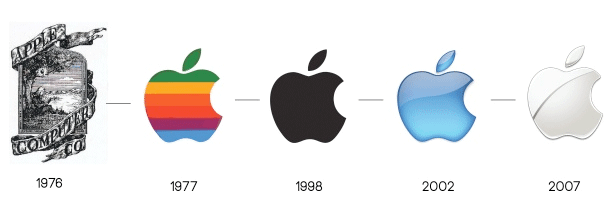Brands Iconicity [INSIGHT]
December 2, 2015
When the first Burger King opened in Paris over a year ago, the huge queue of people waiting outside was featured on French television. The people queuing were not just expecting any burger or any fries, they were longing for one thing: the Burger King experience. Burger King has transcended its simple functional product/consumer aspect to become much more than this. Today, brands like Burger King are thought of as “iconic brands”. These brands have managed to create an imagery that transcends their name, their logo and the products they sell. Over time they have established an emotional link with their consumers that is powerful enough to ensure their loyalty no matter what. This emotional link is the key to desirability and to a certain extent, iconicity, but how do brands go about creating this link? What methods do they use both in their local and international strategy in order to create a stronger brand image?
Three distinctive levels may characterize the path to reaching iconicity starting from its genesis to its final status.
1) The genesis of an iconic brand:
Jean-Noël Kapferer, a French expert on brand management once wrote that while society evolves, cultural breaches may occur and new groups appear. These clusters of people are looking for their own symbols and values, therefore if a brand stands out as the spokesperson for these same values, then it automatically becomes the icon of this movement.
Airbnb, for example, began its expansion by meeting the values of a new generation of travelers who are looking for unique experiences at affordable prices. Their service provides travelers with an alternative to the standard hotel room allowing them to experience a place as a local would do. Today, the brand focuses on its two main assets: a great choice of local housing around the world and a community of travelers who feel they can belong anywhere.

2) Maintaining the status, a daily challenge:
One of the challenges iconic brands face is how to entertain a community of fans and help it to grow bigger and stronger, locally and internationally. In order to do that, brands develop strategic communication plans to reach their target audience through ads, websites and also digital communities. Sometimes brands create special events for their consumers in order to involve them with the brand as much as possible.
For example, Red Bull has been organising extreme sporting events, consistent with their value of overcoming and reaching new heights. These events drive the association between Red Bull and people who like to push their limits therefore creating great appeal amongst their young and dynamic consumers.

3) Compete on the long run:
Through time, brands have to face a double challenge: keep and nurture the original values and heritage while at the same time modernizing the image.
It seems that talking about the brand history and its iconic founders such as Yves Saint Laurent or Steve Jobs are the amongst the most successful manners of enhancing the heritage, and even better, creating a collective image around the brand. An image that will be shared by the consumers globally, and in the long term.
However, if a brand wishes to take advantage of its aura and image, it has to continuously question its relevance towards consumers (in terms of product, needs and communication channels). Cultural evolutions and changes may indeed challenge some brands and push them to adapt themselves or even reinvent their strategy. By doing so, brands can maintain their identity and ultimately forge their iconicity. Small details such as the evolutions of the most iconic brand logos is a minor but very visible consequence of these adjustments.

Facing a highly competitive market, brands have to, more than ever, aim for iconicity. Instead of trying to reach the largest amount of people, brands should focus on targeting the right group of people and speaking out loudly about their values. This will allow them to create a small community of fans that will grow over time to ensure a stable and strong evolution.
Written by Mélanie Bonnet, Associate Director, and Caroline Sarkis, Project Executive.
Image source: Thinkstock, AirBnB, Red Bull, Apple





























